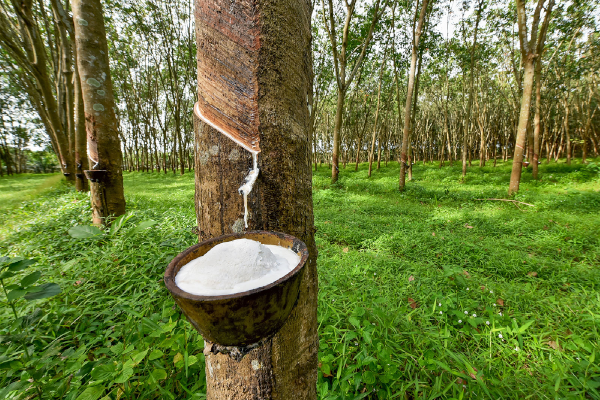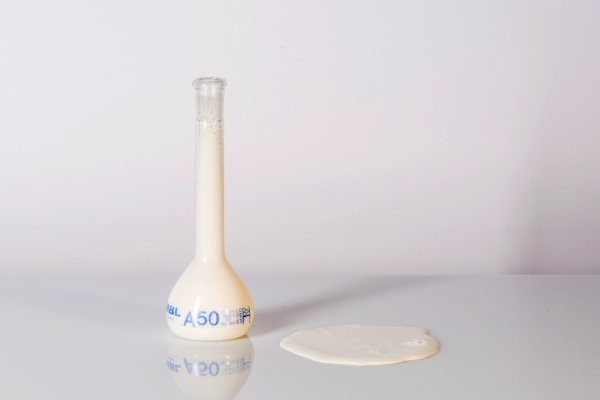The term latex is often used as a synonym for rubber, but the term actually refers to any liquid medium that holds a suspension of tiny polymer particles. Latex is a natural plant substance, but it can also be manufactured by chemical processes.
Natural Latex
Originally, rubber was produced from the latex of Ficus elestica, a type of fig tree. Today, most natural rubber (also called India rubber) is derived from the natural latex extracted from the Pará rubber tree (Hevea brasiliensis), a plant native to the Amazon but now grown commercially in equatorial regions of Southeast Asia. Latex is harvested from the trees by slitting the bark and allowing the milky latex to seep out for collection, a process similar to that used to tap maple trees for sap. After tapping, chemicals are added to keep the latex from stiffening up. It may go through processes like coagulation, centrifugation, compounding, vulcanization, stripping, leaching, chlorination, and lubrication in creating the final natural rubber product. Natural latex is thought to be a cause of allergies in some people, although some studies suggest that it is not the latex itself, but the chemicals used during manufacturer that may actually cause the allergic reactions.
Synthetic Latex
Synthetic latex is also a liquid emulsification of polymers, but rather than natural plant polymers, synthetic rubber uses various substances found in petroleum products. Synthetic rubbers are typically stronger and more stable than natural latex rubber for products such as tires. Some people believe that synthetic latex is also less likely to cause severe allergic reactions. However, people with certain chemical sensitivities may find synthetic latex to be more problematic than natural rubber.
































